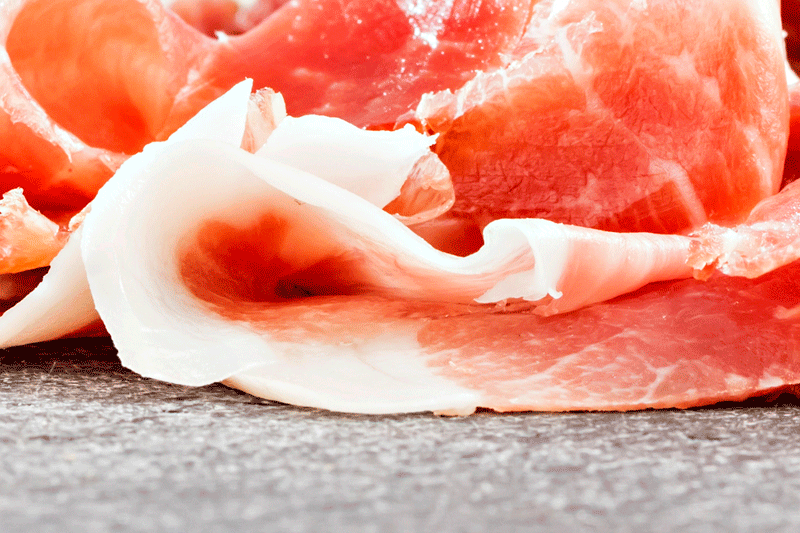There are some real obsessions concerning the “white bit” of the ham. From people who remove it immediately due to its texture or because it makes you fat, to people who will defend it tooth and nail to the point of eating it more than the other part. Neither good nor bad: let’s just call it necessary.
At a time when fat seems to be public enemy number one – currently overshadowed by sugar – the in-depth study of lipidic profiles of the fat present in pigs reopens the debate on whether it is a good idea to eat the streaky part of ham.
Ham, as we understand it traditionally in Spain, is a product of curing the pig’s hind leg in salt. This salt is doubtlessly a great preservative that, nevertheless, needs to be balanced in the mouth to get the wonderful flavour that charms everyone who tries it and makes it so much more than salted meat. This is where the fat comes in, both around it and infiltrated or intermuscular fat. A fatty ham takes on less salt than one with less streaky meat, because the fat acts as a natural barrier to salt penetration, giving a sweeter product. In addition, the sodium content of a ham is not uniform throughout the piece. According to authors such as Carlos Boadas, around 80% of salt absorbed in cured ham is concentrated in the lean meat at the end of its process, whilst the remaining 20% is divided between the rind, bones and fat. Consequently, it is more advisable, from an organoleptic point of view, to keep some streaky parts in the slice to give a balanced, exquisite flavour in the mouth, evening out the saltiness.
On the other hand, the streaky meat is also responsible for the fragrance and final texture of the lean meat. During the curing process, from the initial cold phases to summer heat and resting in the cellar, the fat melts and infuses the whole piece with its fragrance and its flavour.
But what about from a health point of view?
We’re not going to encourage everyone to go mad eating streaky ham. As happens with so many other products, such as oil or wine, it is best to always eat it in moderation. In addition, a balanced diet must include between 25 and 30% fat, as long as saturated fatty acids (lauric, myristic and palmitic) do not account for more than 10%.
The studies that we initially mentioned on the pig fat’s lipidic profile have demonstrated that it contains a greater proportion of unsaturated fats (known as healthy fats) than saturated fats. In fact, although it was traditionally believed that pig fat was harmful, it has been demonstrated that it is much healthier than other meat such as beef, lamb or even chicken (although in the latter case, as this is very lean meat, it is easy to separate off the fat if we don’t want to eat it). Among the unsaturated fats present in ham, we could highlight the oleic acid, olive oil, in a percentage that goes from 40 to 45% in white ham (around 45% in the case of PDO Teruel Ham) up to 55 or 60% in acorn-fed 100% Iberian ham. This heart-friendly fat helps raise HDL levels (good cholesterol) and lower LDL levels (bad cholesterol).
In short, we can state that to make a good quality ham, it is essential that the piece contains some fat. The decision to eat it, or not, is entirely ours.



thank you for the article